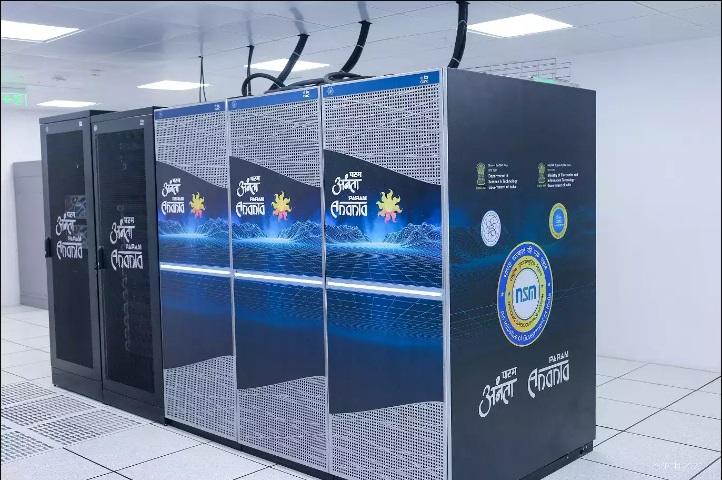
Param Ananta, is a state of the art supercomputer at IIT Gandhinagar dedicated to the nation under the National Supercomputing Mission (NSM). It is a joint initiative of the Ministry of Electronics and Information Technology (MeitY) and the Department of Science and Technology (DST), which was commissioned. This indigenous software stack is developed by C-DAC and is a Make in India initiative.
About the MoU:
- A Memorandum of Understanding (MoU) was signed between IIT Gandhinagar and the Centre for Development in Advanced Computing (C-DAC) on October 12, 2020, to establish this 838 TeraFlops Supercomputing Facility under NSM.
- The system is equipped with a mix of CPU nodes, GPU nodes, high memory nodes, high throughput storage, and high-performance Infiniband interconnect to cater to the computing needs of various scientific and engineering applications.
About the Param Ananta:
- The Param Ananta is based on direct contact liquid cooling technology to obtain a high power usage effectiveness and thereby reduce the operational cost.
- The Param Ananta Supercomputing Facility will greatly benefit IIT Gandhinagar’s R&D activities in multidisciplinary domains of science and technology, including, but not limited to, artificial intelligence (AI), machine learning (ML), data science; computational fluid dynamics (CFD); bio-engineering for genome sequencing and DNA studies.
- Computational biology and bioinformatics are used in the prediction and detection of gene networks; atomic and molecular sciences that help in understanding how a drug binds to a particular protein; climate change and environment studies for extreme weather predictions and simulation of models which can predict the onset of a cyclone;
- Energy studies which will help in carrying out design simulation and optimization of energy conversion devices at various scales; fire dynamics simulation; nanotechnology; robotics; applied mathematics; astronomy and astrophysics; material sciences; quantum mechanics; and studies on civil engineering and structural mechanics to understand the dynamic behaviour of buildings, bridges, and complex structure.



 Indian Olympic Medal Winners List Till N...
Indian Olympic Medal Winners List Till N...
 Who is the Inventor of the Gramophone?
Who is the Inventor of the Gramophone?
 HS Dhaliwal Appointed New DGP Of Andaman...
HS Dhaliwal Appointed New DGP Of Andaman...
